How to Develop a Successful PR Strategy In 2021 (Guide)
The way to develop and launch a successful PR strategy has changed. In this guide, you’re going to learn how strategic PR can help your business grow in 2021. More specifically, Read More...
We know how difficult it is to get your startup off the ground when you’re starting out.
This is why we’ve created a complete startup PR guide to help get started.
Our guide doesn’t include hacks, silver bullets, or PR tips with short-term results.
Just a step-by-step process you and your small team can use to get press coverage.
Here are some of the steps you’ll find in this guide:
We’ve got a lot to cover, so we better get started.
The first and most important question when it comes to startup PR is what it is. So, if I had to give a definition on what startup PR is I’d say that,
Startup PR is every activity—both online and offline—that could help a startup company get publicity on relevant media outlets, blogs, social media, podcasts, and industry publications. This publicity will eventually help the company raise awareness about its products and services and help its target audience create a positive perception of the company.
Why this is important is obvious: most startup companies—especially VC-backed ones—are destined to fail.
Thus, making a difference and surviving can be extremely difficult.
Can publicity and media relations help you increase the chances of surviving and eventually finding a product-market fit and start growing?
It could, but it’s not the only factor.
In 2018, a UK company that offers current accounts and money transfer services has raised it’s series B round of $60 led by investment firm Kinevik.
The announcement followed news articles on important tech publications such as TechCrunch.
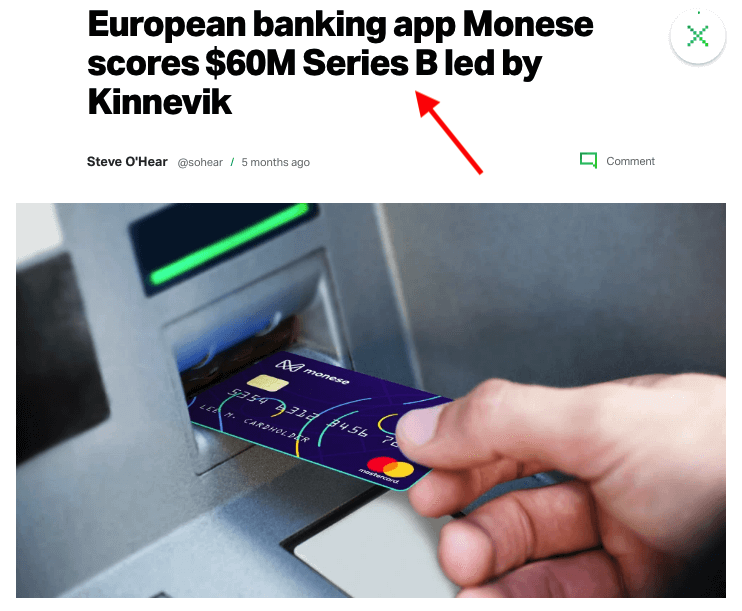

According to the company’s head of growth, Yannis Karagiannidis, “the day our funding round was announced, we got lots of people from San Francisco trying to open an account with us because that’s the most popular city for Techcrunch probably.”
So, this article got the company some free publicity and helped it—without being designed to do so—to boost it’s PR efforts and get some people from San Francisco to learn about Monese’s company name and even get some new accounts.
Has it helped the company reach its business goals though?
And, most importantly, would it matter if Monese didn’t have a great product for all the users who would join the company and open their current accounts there?
What I’m trying to say is that PR is, of course, important, but it’s not the single most important factor.
Many startups are trying to get publicity online and get featured on popular publications such as the New York Times, VentureBeat, or Mashable, but few of them actually manage to survive after that.
Having a good story to tell is important, but having a strong value proposition and actually delivering on your promises is imperative.
Thus, startup PR only makes sense in the context of having a great product to support everything that you do.
Back in November 2019, Elon Musk announced the launch of a new (revolutionary) truck that would be put into production in 2021.
Following the announcement, you can see that there was a huge spike in interest for the term “Cybertrack”.


Of course, the announcement followed dozens, if not hundreds, of news articles in publications like Forbes, CNN, CNET, TechCrunch, The Verge among others.
What is interesting is not the publicity that Tesla’s announcement got, but the fact that it had an impact on the company’s bottom line.
As per Tesla’s CEO with a Tweet he made a few hours after the announcement, the Cybertruck had 146K orders without any advertising or paid endorsements.
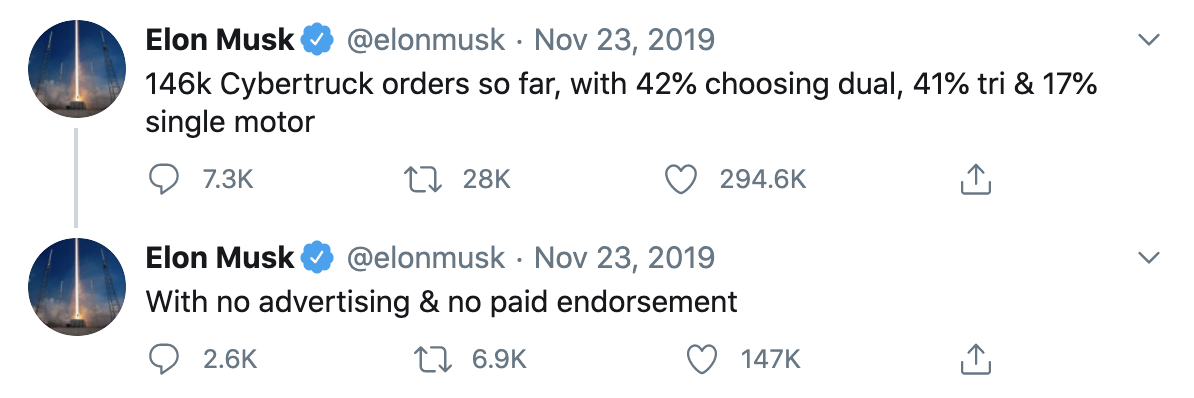

Of course, this type of publicity and virality doesn’t happen overnight.
Elon Musk and Tesla have proved their value many times in the past and thus it’s only natural that people got excited about the new product and that the media embraced it and helped spread the word about it.
Thus, it’s essential to keep in mind that even though startup PR is important, there has to be substance behind it.
You don’t want to be one of these tech startups that got coverage in big media outlets, got evangelized by influencers and bloggers, and then died.
Now that you know what startup PR is, let’s take a look at the two ways you can apply it for your own startup business.
In general, there are two ways you can do public relations for your PR:
Here are the differences between these two ways:
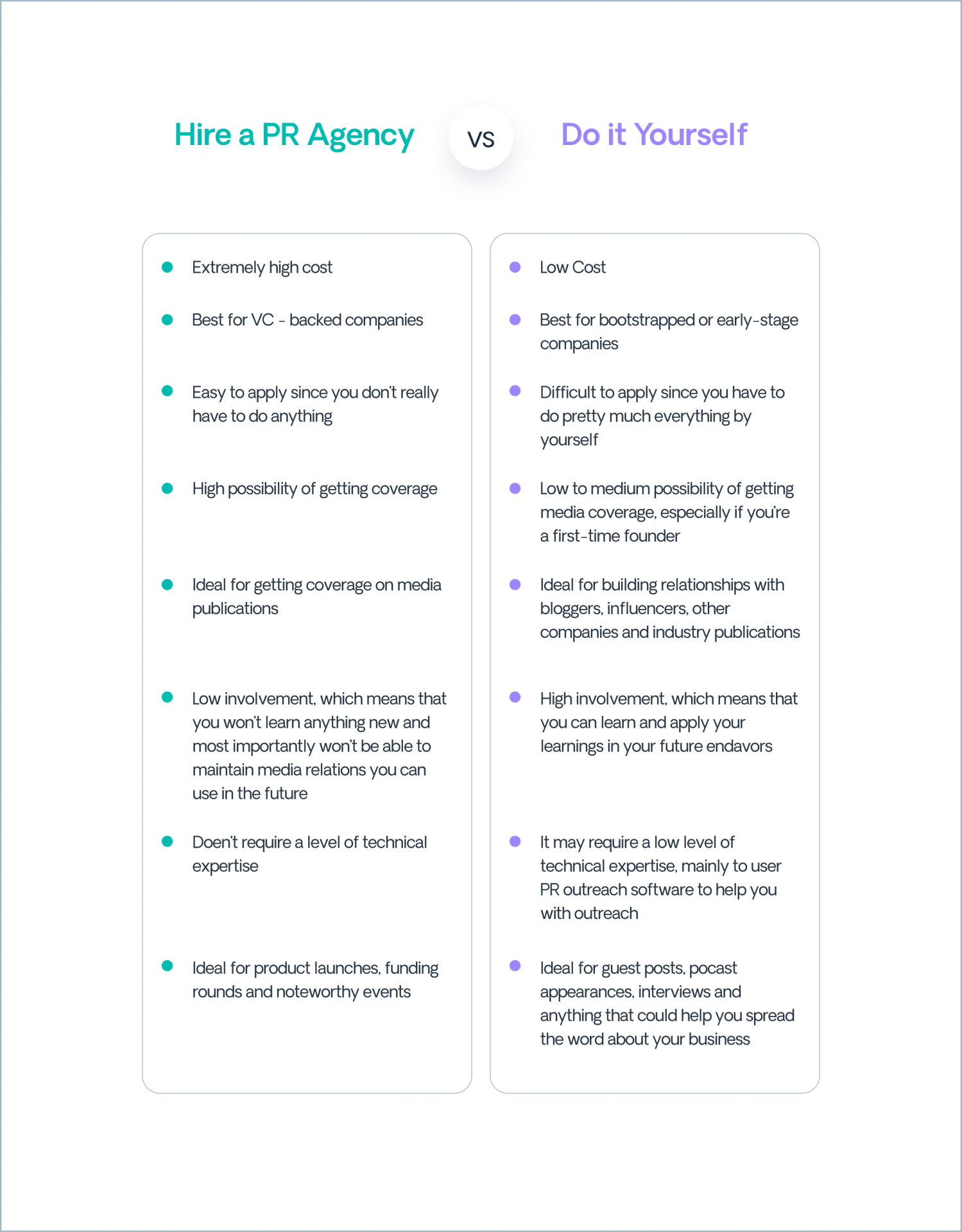

Even though we believe that both of those two ways can be effective for your PR efforts, it is obvious that the second way (doing it yourself) has many more benefits than hiring a PR firm or agency.
The truth is that especially if you’re an early-stage company, you can’t really afford to hire a PR agency.
In addition, doing it yourself will allow you to acquire knowledge and build relationships that you can later leverage, regardless if you’re going to do it for the same company or for another one.
The process we’re going to cover moving forward is based on the assumption that you’ve chosen to do digital PR for your startup by yourself.
Let’s get into it.
The first step toward executing a successful startup PR is to get your target audience right.
To describe how that works for an actual startup, we’ll be using Blindlee — a dating app that’s using Respona for it’s startup PR needs — as an example.
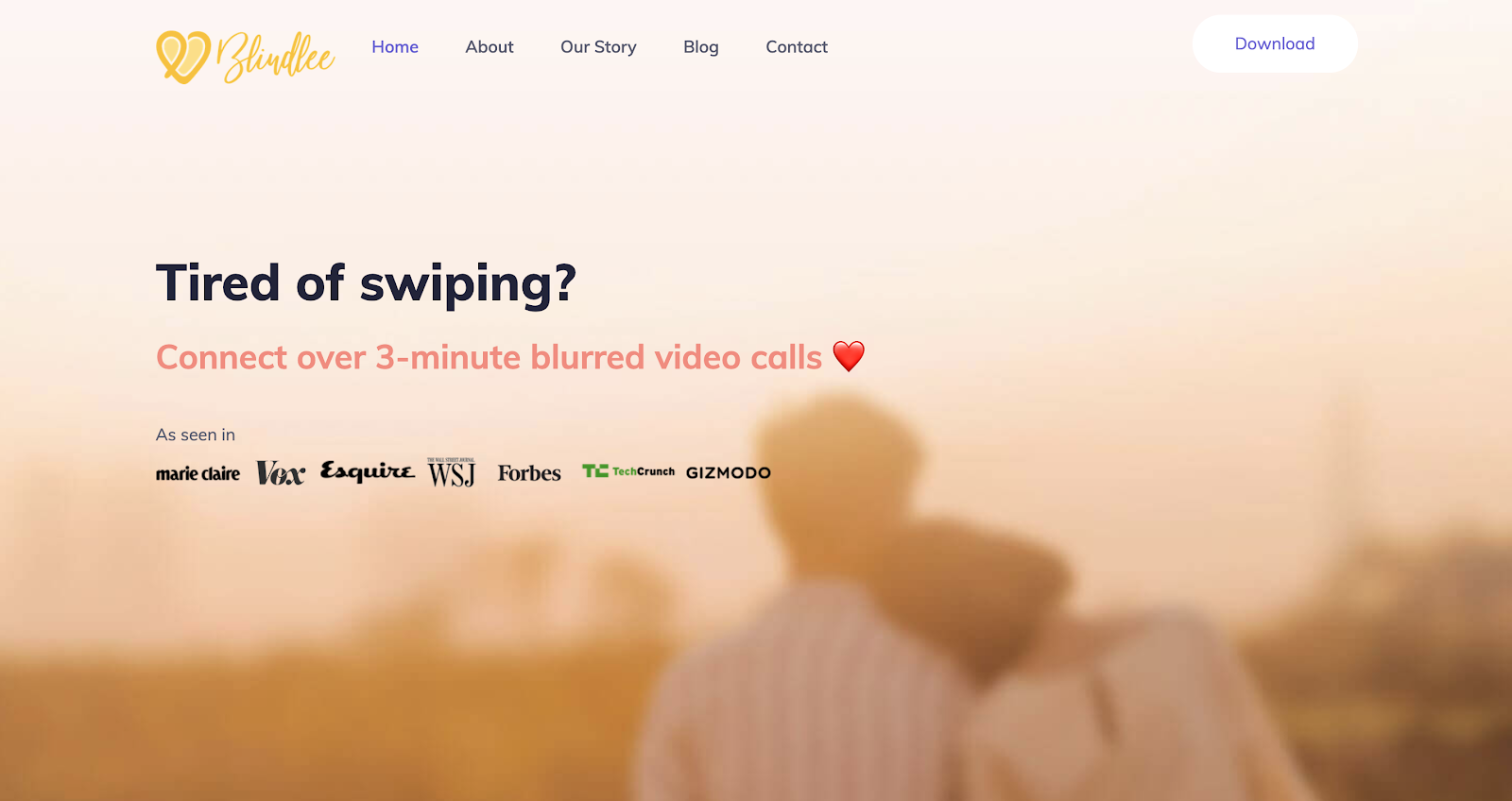

As you can see from the screenshot above, Blindlee is a startup that’s done a great job with their PR efforts.
The app has been mentioned in publications like TechCrunch, Gizmodo, Esquire, WSJ, Forbes, Marie Claire, and more.
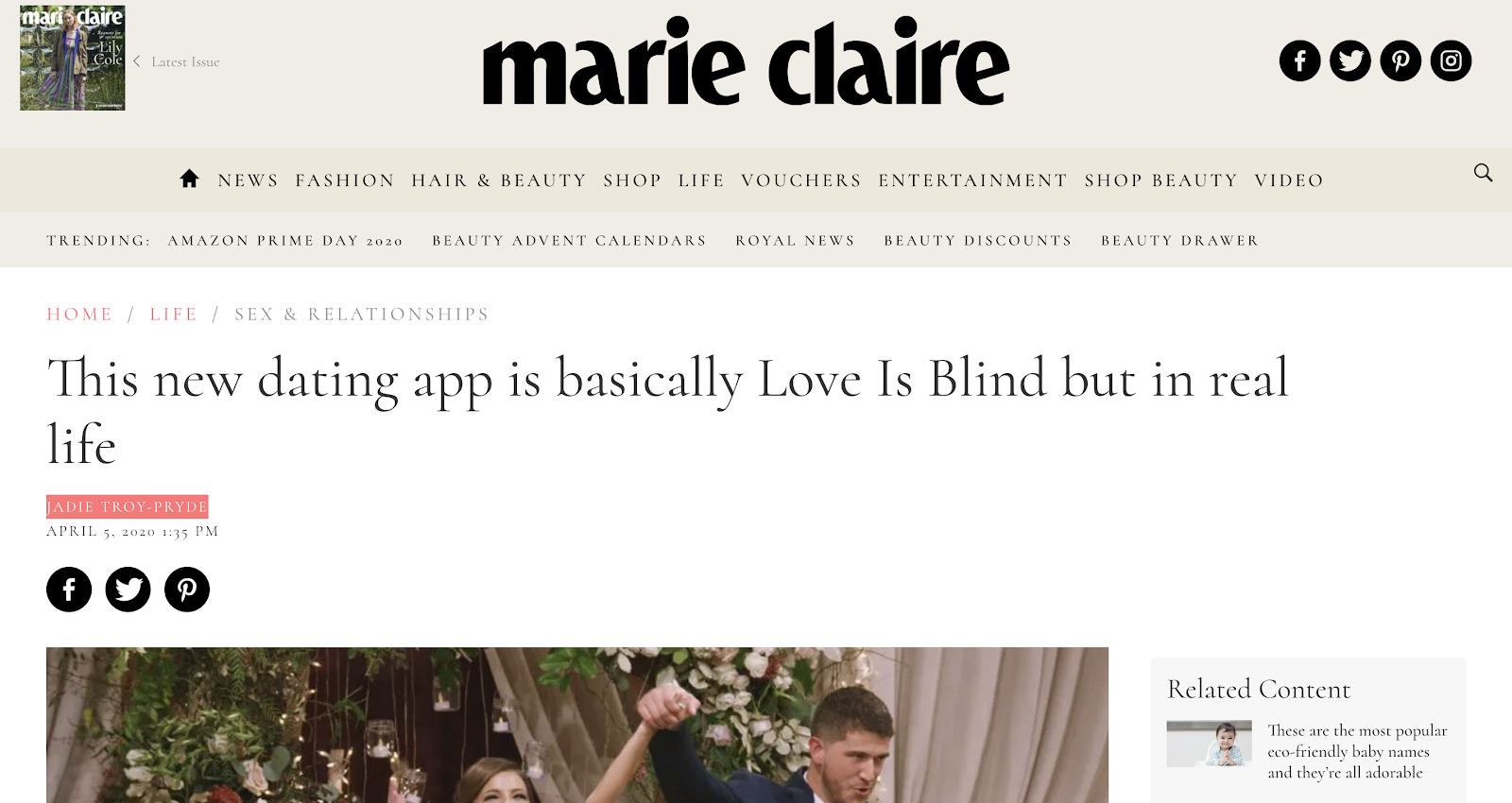

Besides getting them some really useful digital PR, this has helped the app’s website improve its authority and overall visibility.


Blindlee is one of the most successful case studies for the right use of media to get PR.
Throughout this guide, I’ll be sharing with you how Blindlee did it whilst using Respona.
This way, you’ll be able to follow the steps outlined below and generate some startup PR for your own company.
Let’s get into it.
The first step is to start a new campaign with Respona.


Then, you need to give your campaign a name and click on “Create”.
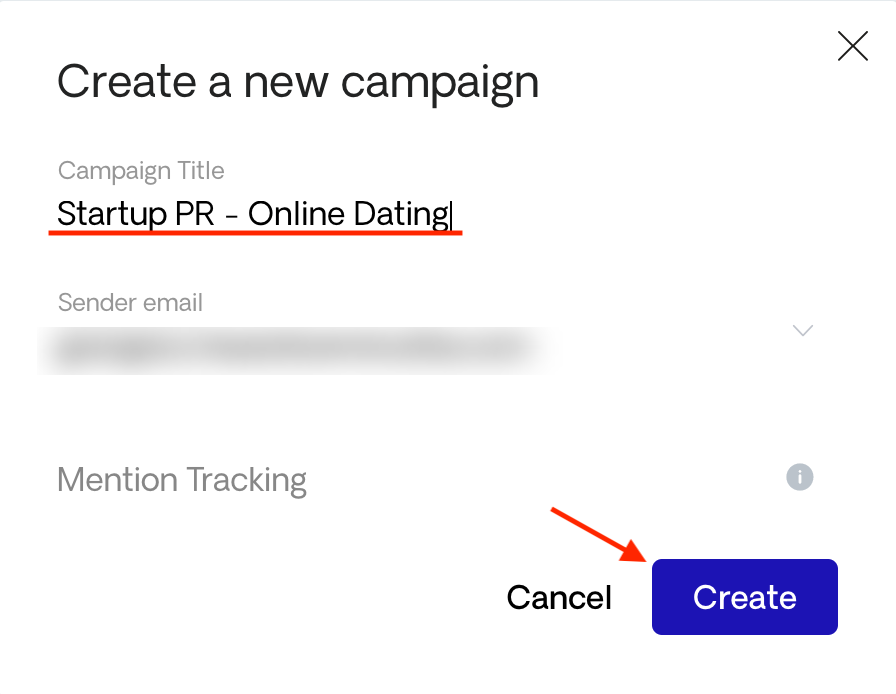

Author’s Note: Make sure to give your campaign a name that’s easy to understand by different stakeholders within the company and use identifiers like; the audience, if you’re targeting different ones; the content name if you’re doing outreach to promote a content piece; or the month/date if you’re running and generally managing several campaigns.
With Respona, you can build a campaign using one of the following methods:
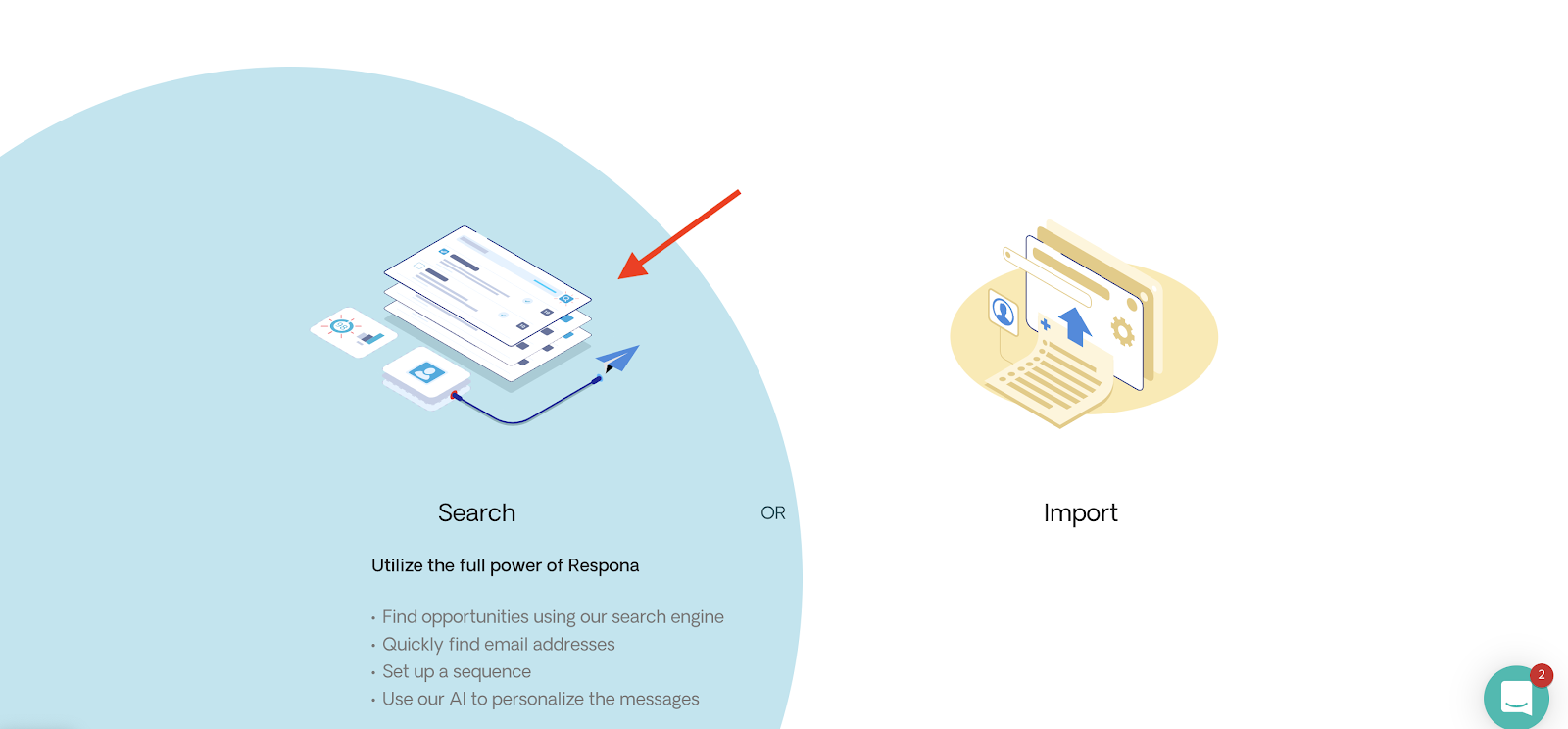

Author’s Note: Respona’s search engine results are powered by Bing so you may notice some differences between results in our search engine and other search engines like Google.
For the purposes of this campaign, we’re going to choose the “Search” option.
Next, we need to insert a search query that’ll allow us to get results that:
Here’s what our search engine will look like:


You can change the source – for the purposes of this example – from the dropdown menu at the left of the search bar,
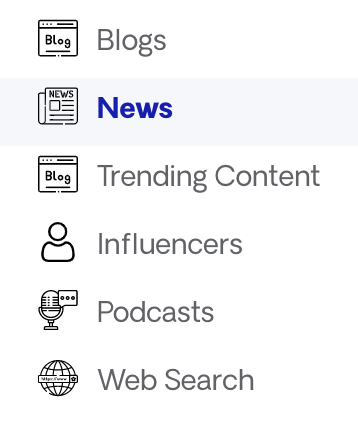

You can change the time period for which you’d like to see results by clicking on the “Freshness” menu;
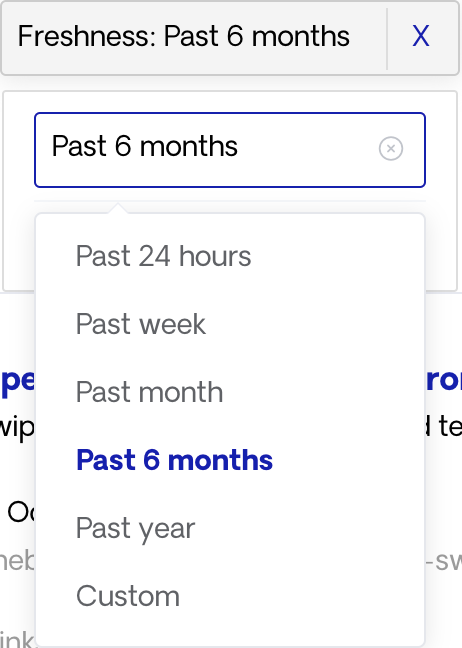

Lastly, you can choose a different search query by inserting whatever you believe makes sense in the search bar, as shown below:


Some of the search queries you can use would be the following:
After clicking enter, Respona will return the best results for your search.


As you can see for the above parameters, Respona has found more than 56,900 results, with the majority of them being from authoritative websites.
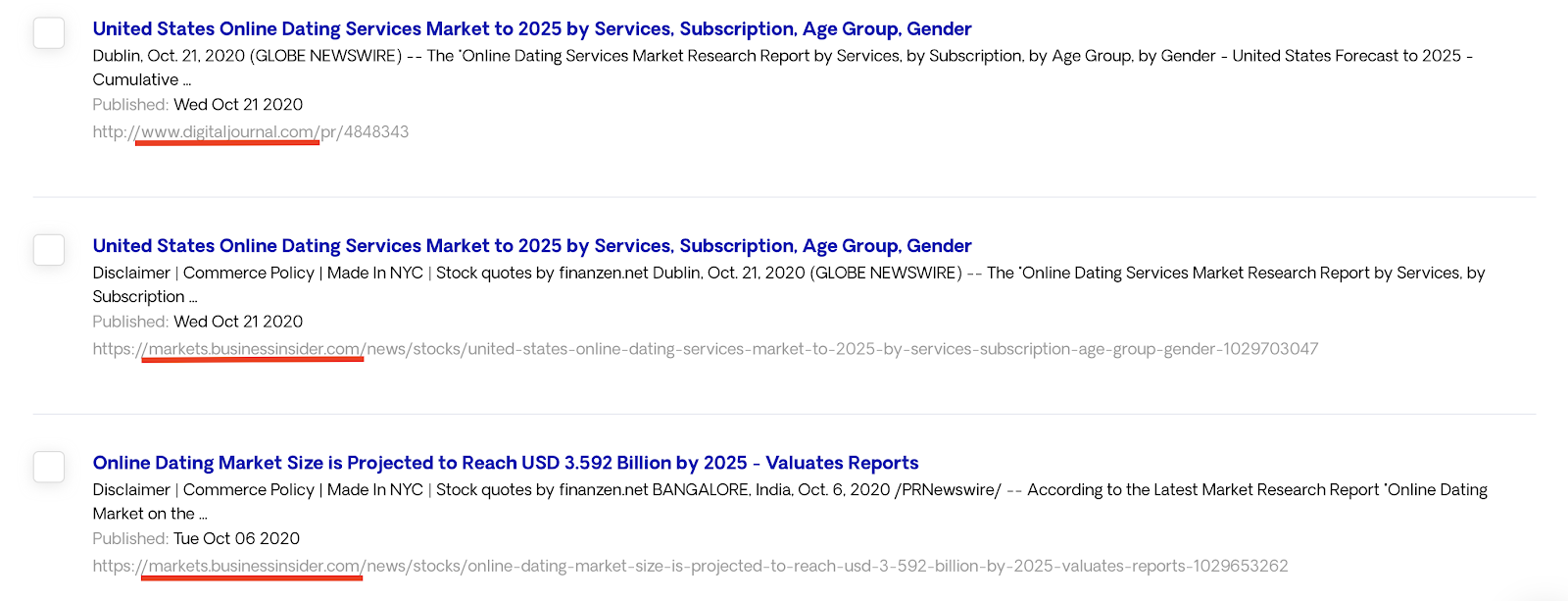

You can visit the results that seem to be most promising to see whether they are, indeed, relevant to what you’re looking for.
Here’s a great example:
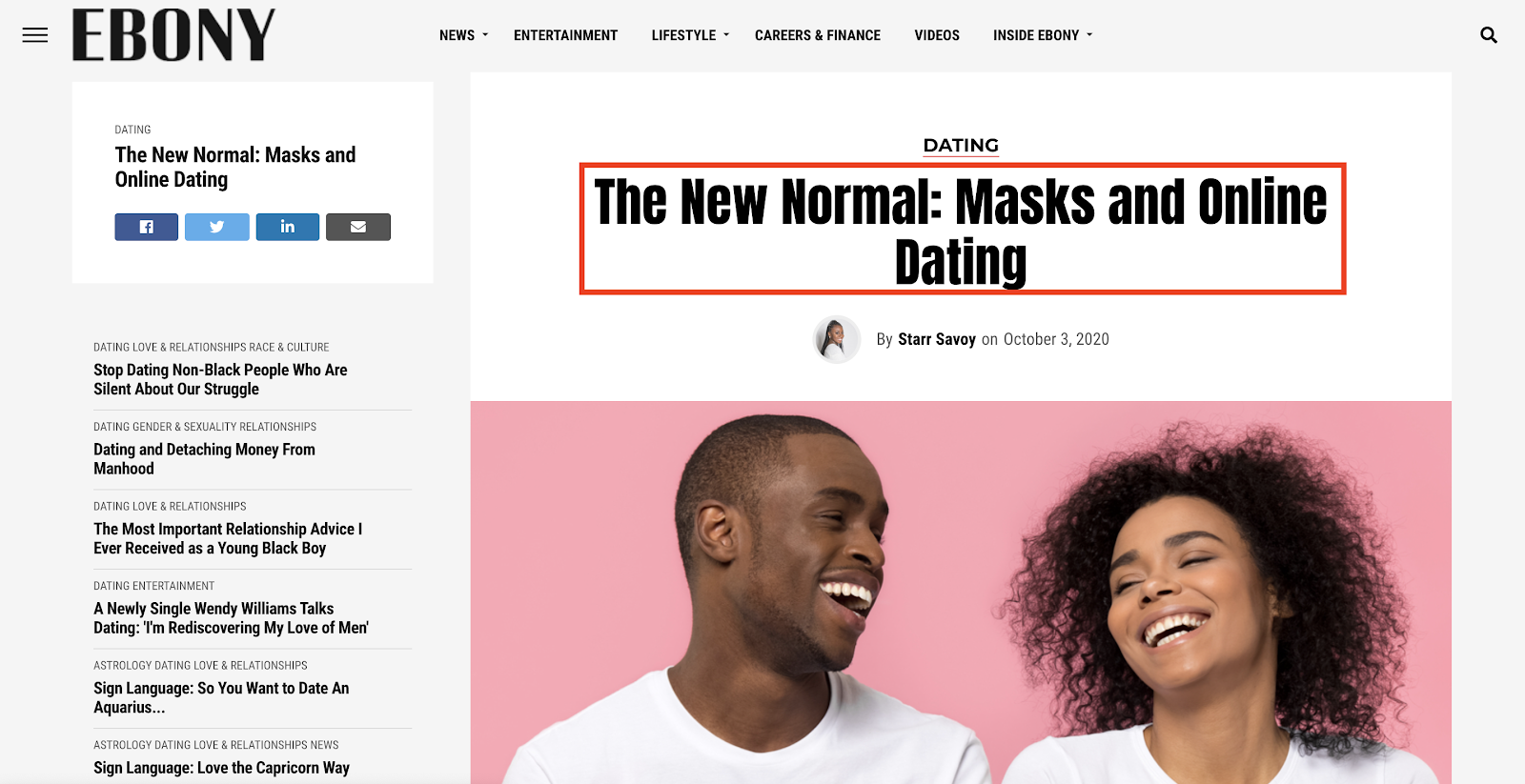

That’s a news article from Ebony.
It’s fresh, it has humor, and it’s time relevant, as of the writing of this piece on Wed, November 4th, 2020.
After vetting the opportunities based on your specific criteria, you can choose the ones that you consider to be relevant by choosing them one by one or by clicking on the choose all button at the top of the results.


Author’s Note: For the purposes of this example campaign, we’ve chosen only 15 opportunities. Based on the reason for your outreach, e.g. content marketing, we always suggest adjusting the number of opportunities you’re going to reach out to. For example, when promoting an infographic you’ve designed, you may want to reach out to more opportunities to increase your chances of getting mentions and links.
When you’re done choosing the opportunities you’re going to reach out to, make sure to check the final number displayed at the area highlighted below.
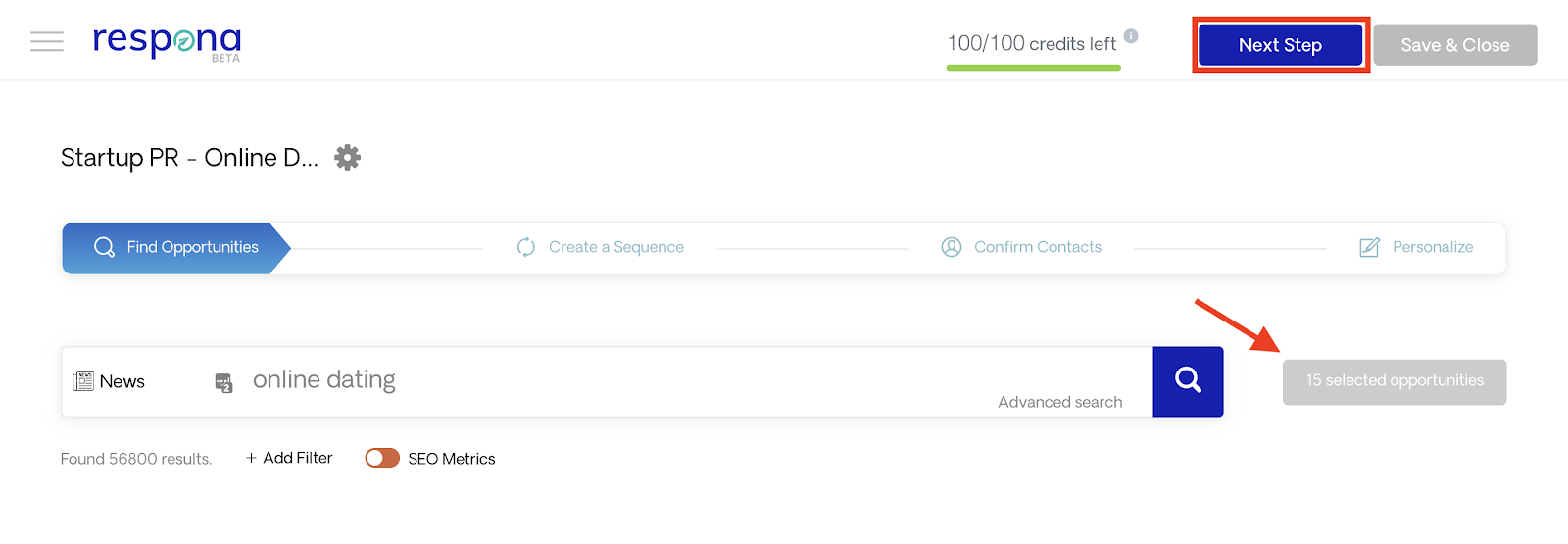

From there, you just have to click on “Next Step” and move to the next step of the process where you’ll have to create your email sequence.
As you’ll have noticed, creating a list of prospects with Respona is really easy.
To be sure that those prospects are relevant to what your startup is doing, always make sure to check their Twitter and LinkedIn profiles, see what they publish online, and what they’re interested in.
This way, you’ll be able to separate the good opportunities from the bad ones.
Moving on to the next step.
The next step is to create your email pitch.
Even though there are many outreach templates you can use to do this, for the purposes of this campaign, we’ll be creating a new email from scratch.
To do that, click on “Create New”.
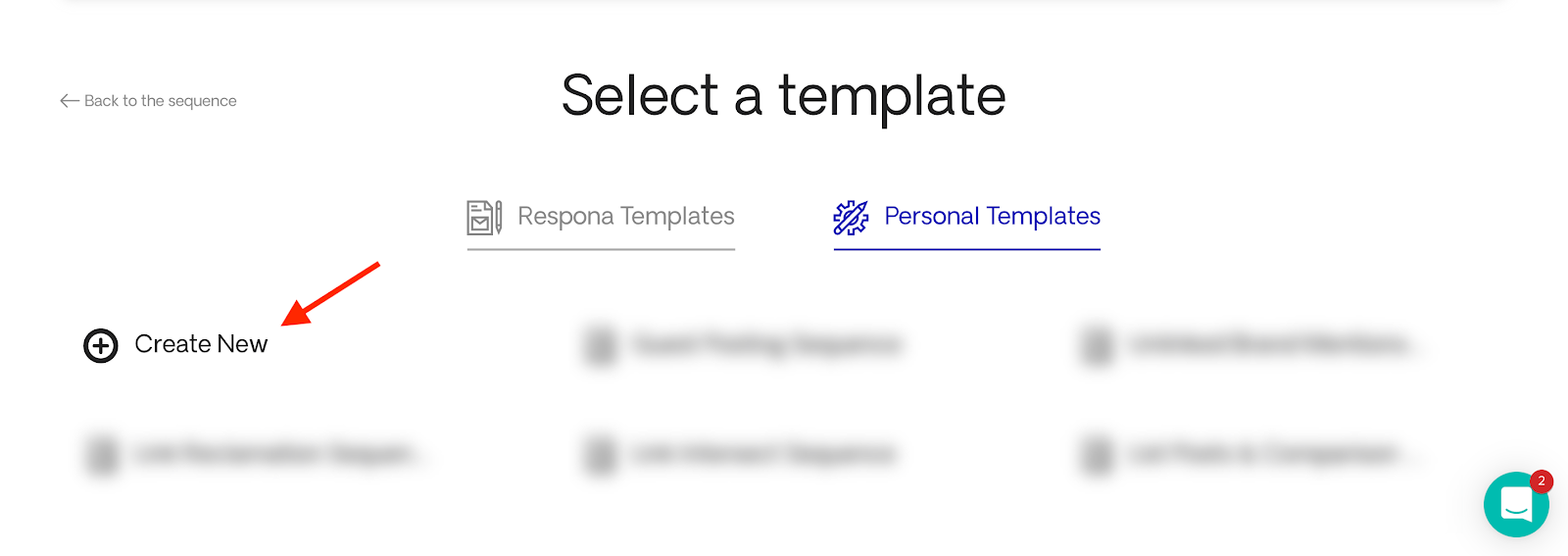

Give your email sequence a title.


Author’s Note: Make sure that this is something you can use in other campaigns as well.
Even though there are no silver bullets for creating an email pitch that gets replies, there are some fundamentals you should be aware of:
Writing an email pitch that gets replies is something like an artform.
The email pitch that we’ve created for the purpose of this campaign is the following:
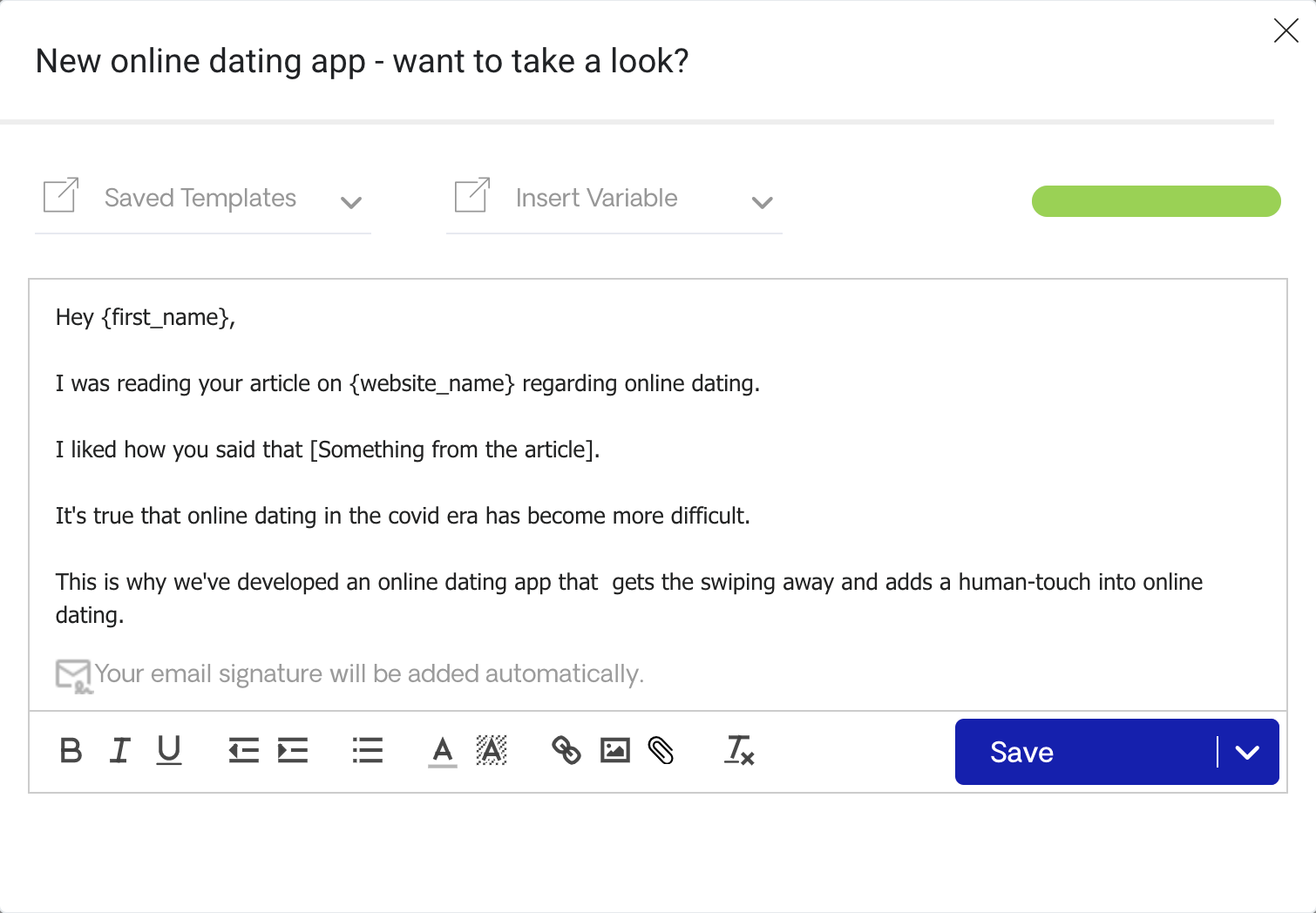

Here’s the full email:


Subject
Hey {first_name},
I was reading your article on {website_name} regarding online dating.
I liked how you said that {Something from the article}.
It’s true that online dating in the era of covid has become more difficult.
This is why we’ve developed an online dating app that takes the swiping away and adds a human touch into online dating.
Would you like to take a look?
Let me know and we can provide you with any information you might need.
Thanks,
As you can see below, our email has scored a high grade according to Respona’s grading system:
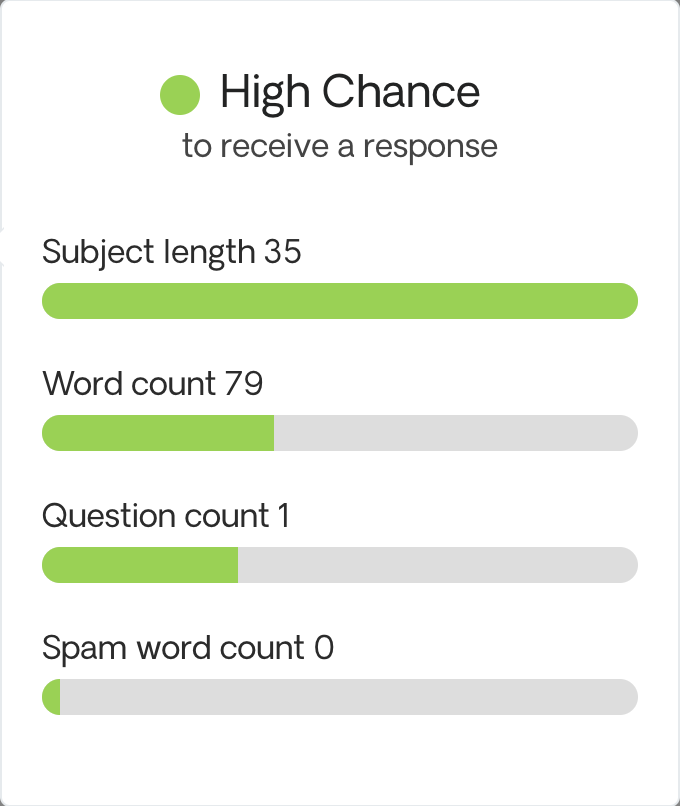

This is because the email has a good word count, a good subject length, it includes a question, and it doesn’t include a spam word in it.
Something very important is “Variables”.
These are text elements that change based on each opportunity’s specific information.
For example, as you can see below, one of the variables we’ve chosen is the name of the website we’re reaching out to.
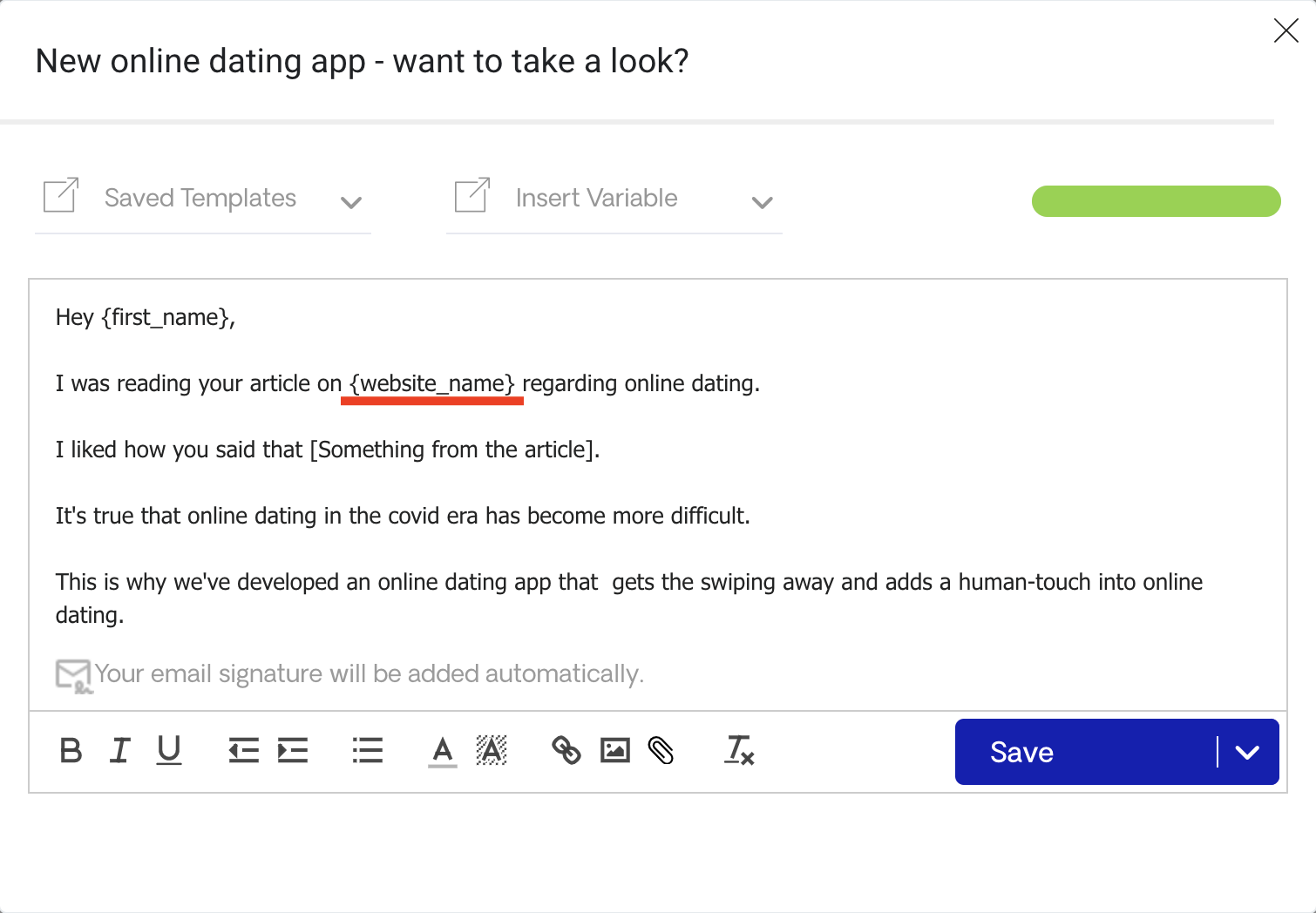

Author’s Note: Those variables will be adjusted automatically in the following steps of the process, based on the assigned opportunities on your outreach list.
To insert a new variable into your email, you have to click to “Insert Variable” and choose the variable that you want.
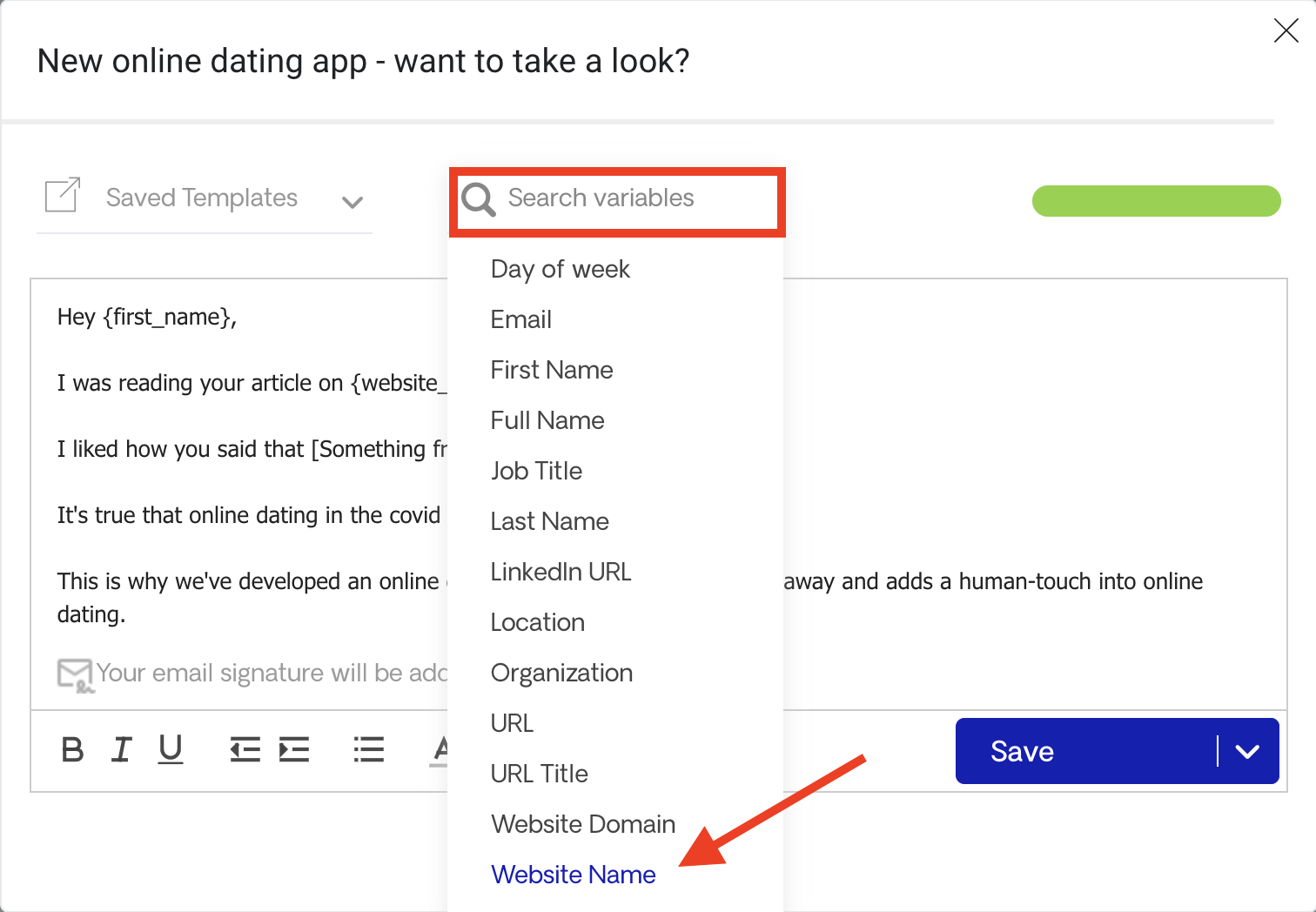

When you’ve finished editing your email, you can click “Save”.
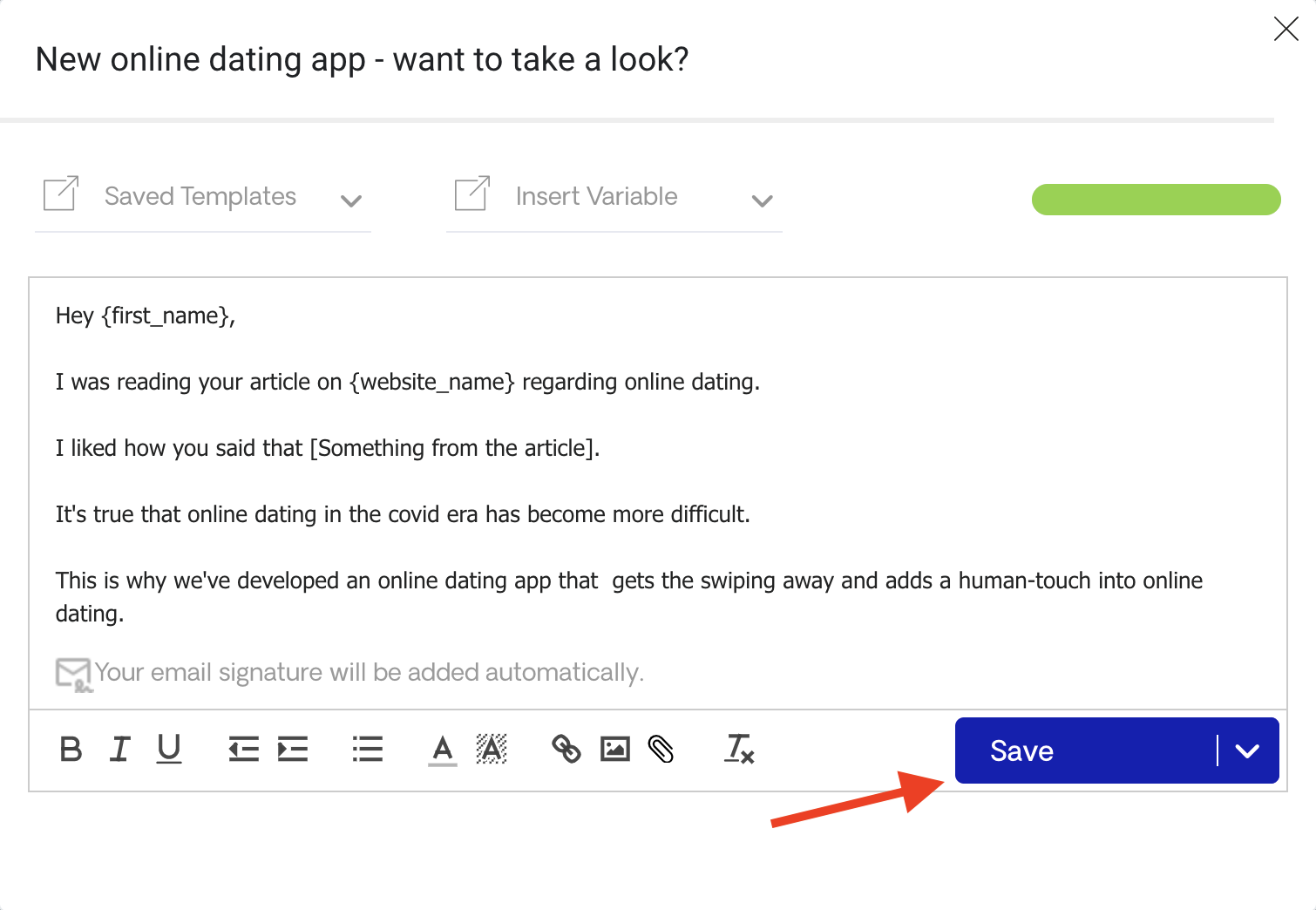

Your email will then be saved as the first email in your sequence.


You can add a follow-up email to your sequence by repeating the same process.
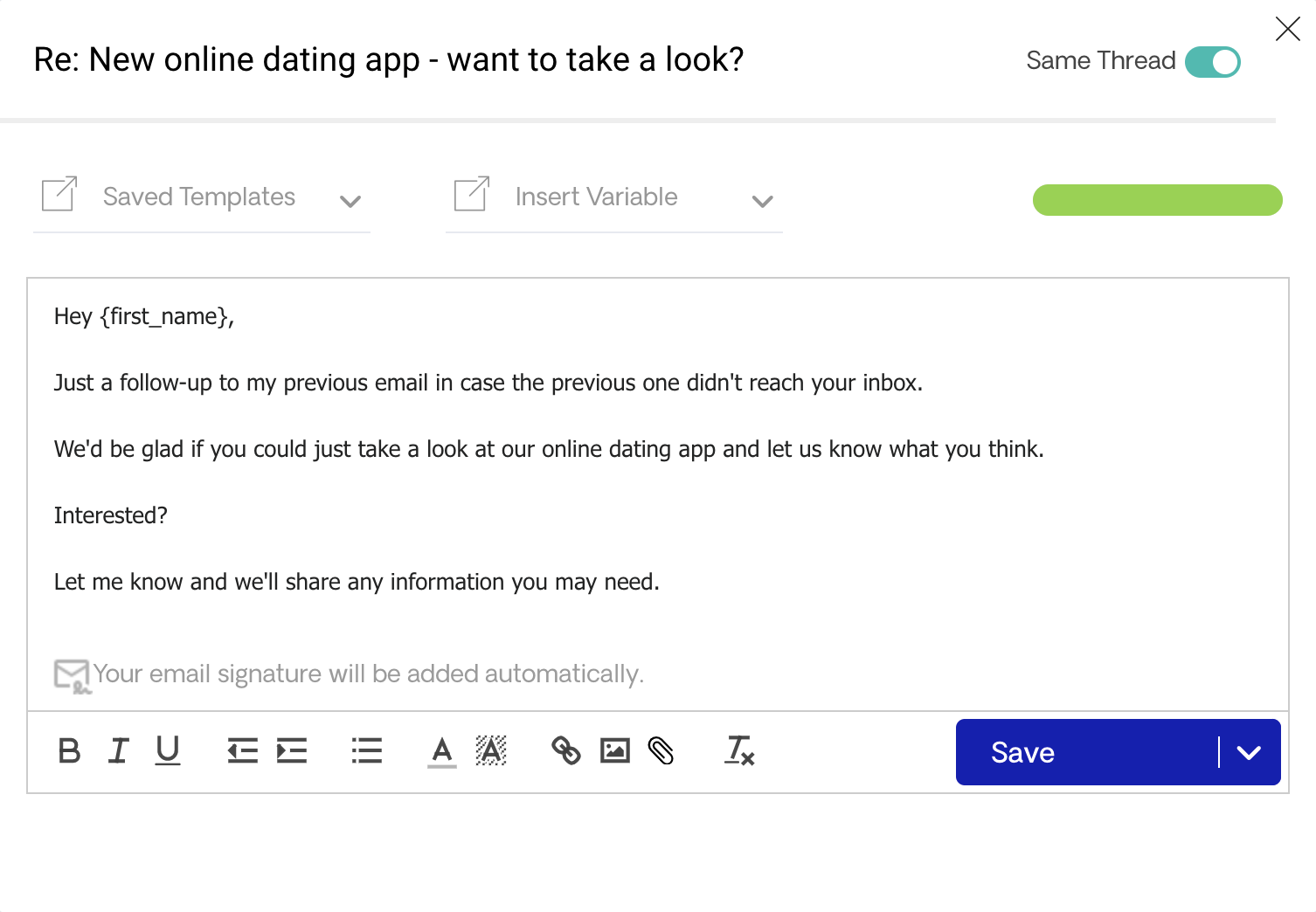

When you save your follow-up email, you’ll see that now your sequence now has two emails in total.
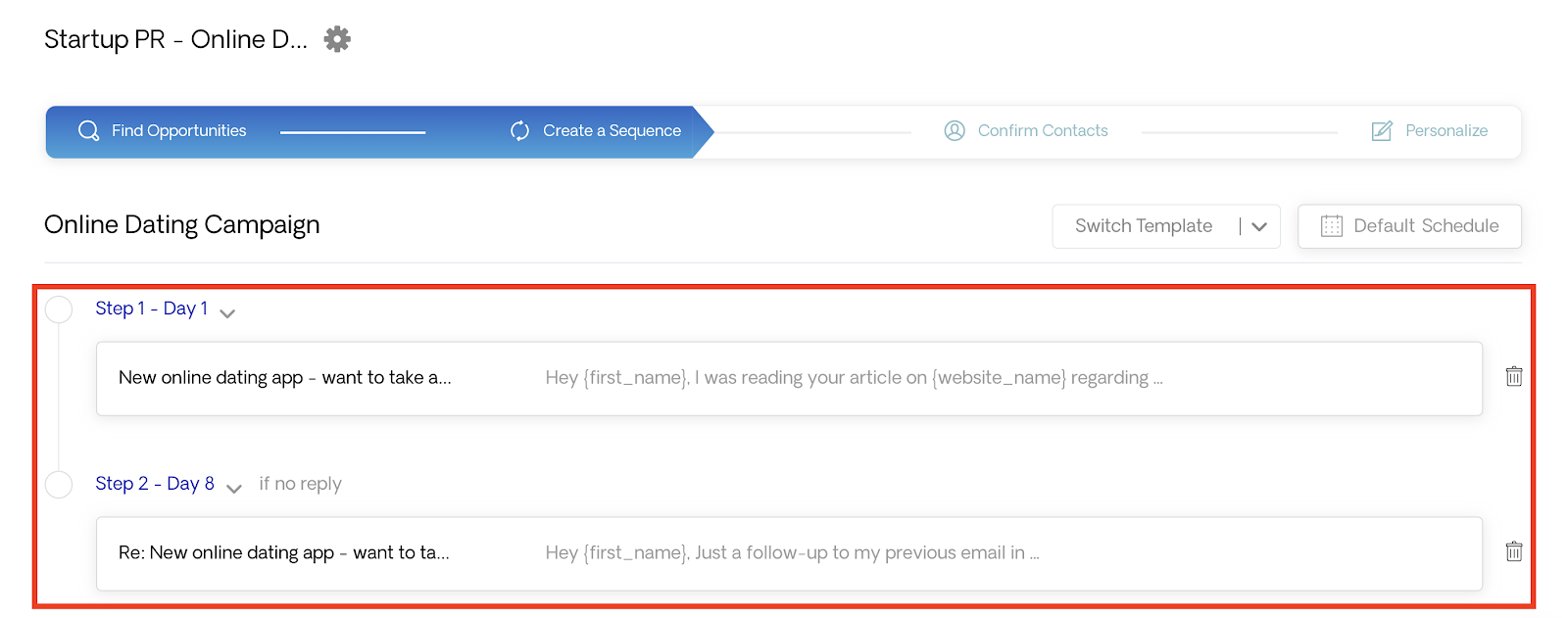

You can add as many follow-up emails as you like, but we always suggest being respectful of people’s time, especially when you’re reaching out to busy journalists from big publications.
After finalizing your email sequence, you can once again click on “Next Step”.
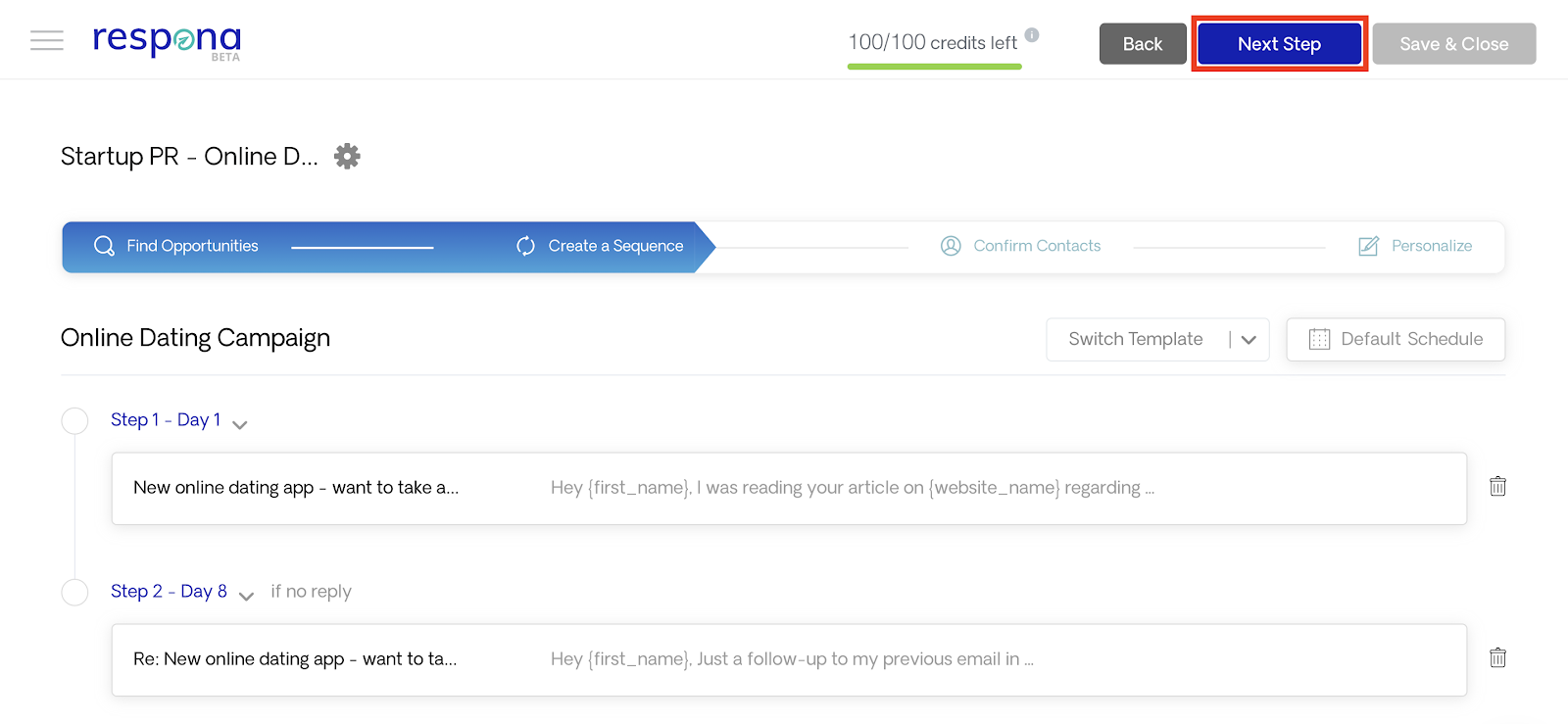

In the next steps of the process, we’ll be assigning a contact to each opportunity in our media list.
In the first step, we’ve identified our audience — journalists who are covering topics around online dating.
At this point, we have to make a list of media contacts, meaning that we have to identify the best contact for each opportunity.
Let’s see how you can do that through Respona.
First, you have to choose whether you want Respona to assign opportunities to authors of URLs.
For our example, it makes sense to choose this option since the journalists we’ve identified as opportunities are regular contributors to the publication, rather than guest posters.
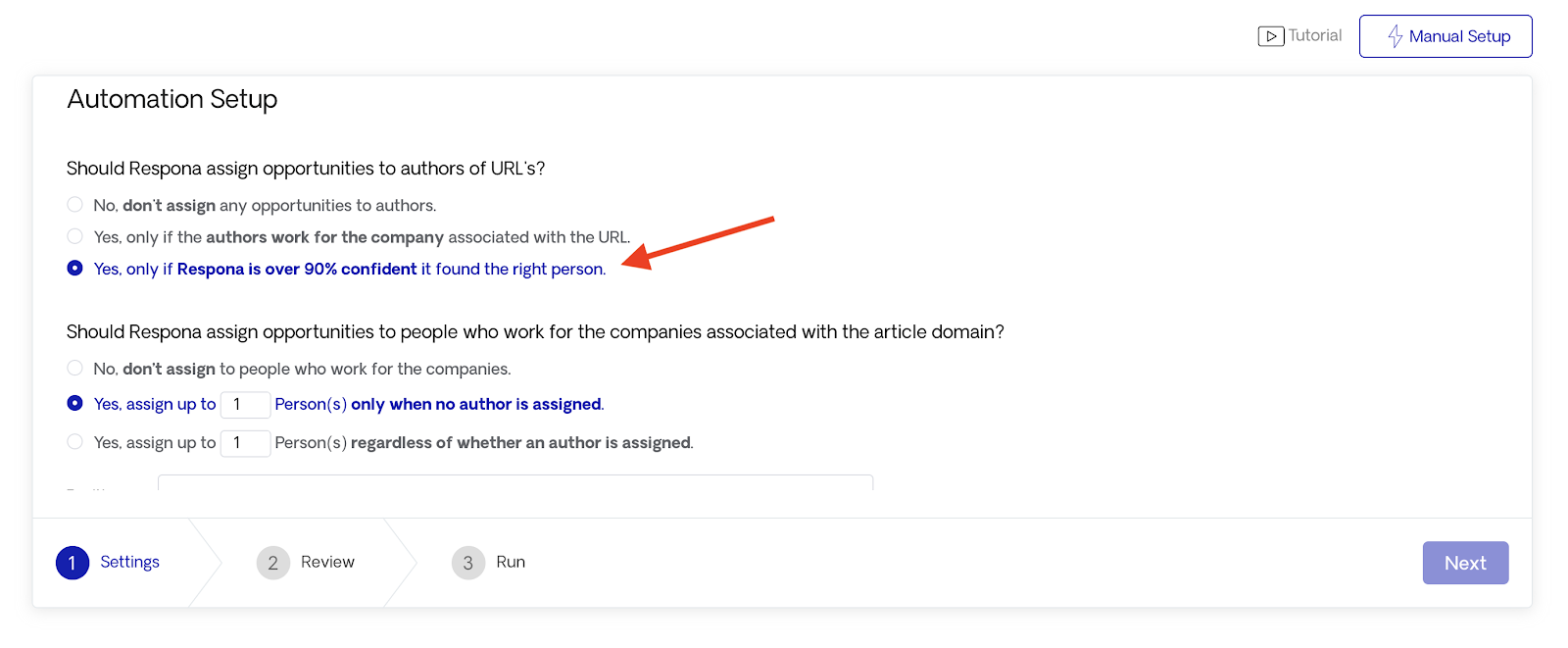

Next, you can also assign opportunities to people who work for the companies associated with the article domain.
This can be very helpful when:
In the screenshot below, I’ve chosen to assign up to two opportunities to people who work for the company, but only when no author is assigned.


Not only that, you can also choose a position and seniority of those people.
As you can see below, I’ve chosen Respona to search for people who work in the company and have the words “editor” or “content” in their title, and at the same time are in “manager” or “director” positions.


This increases the chances of getting a reply from someone who could help your startup get PR coverage.
Here’s how all the parameters look after making all the necessary adjustments.
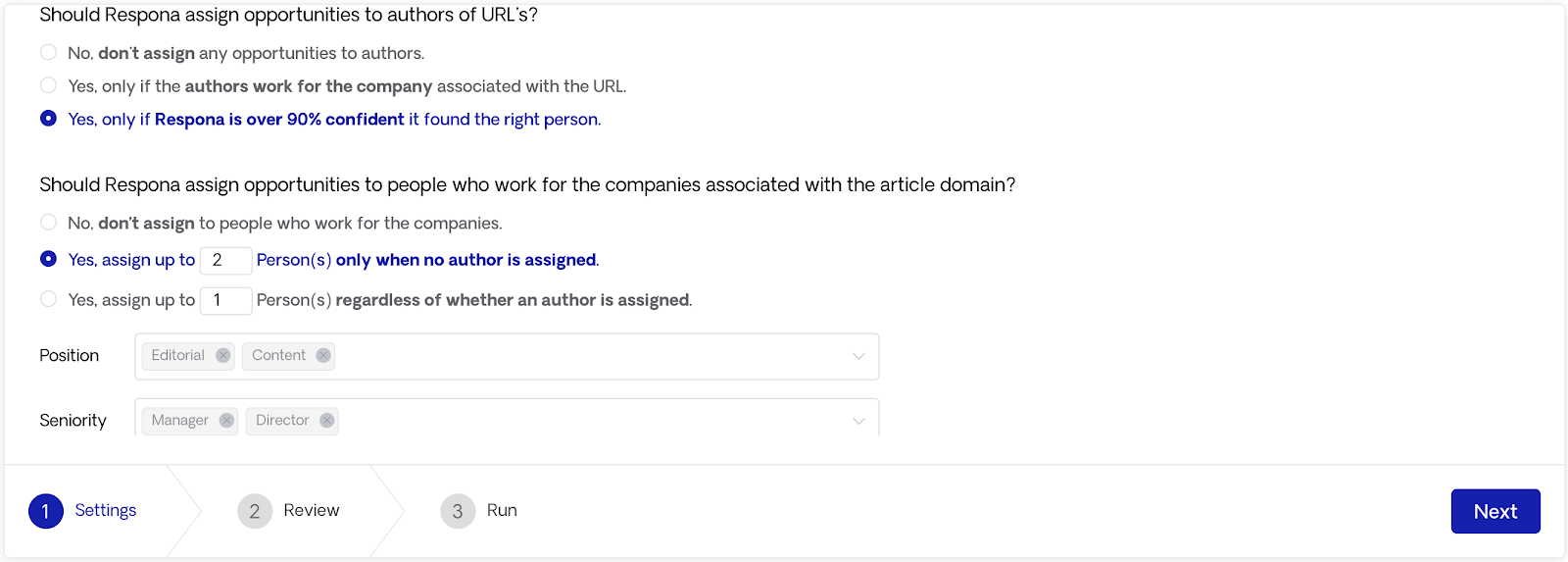

Here’s what you’re going to see next:
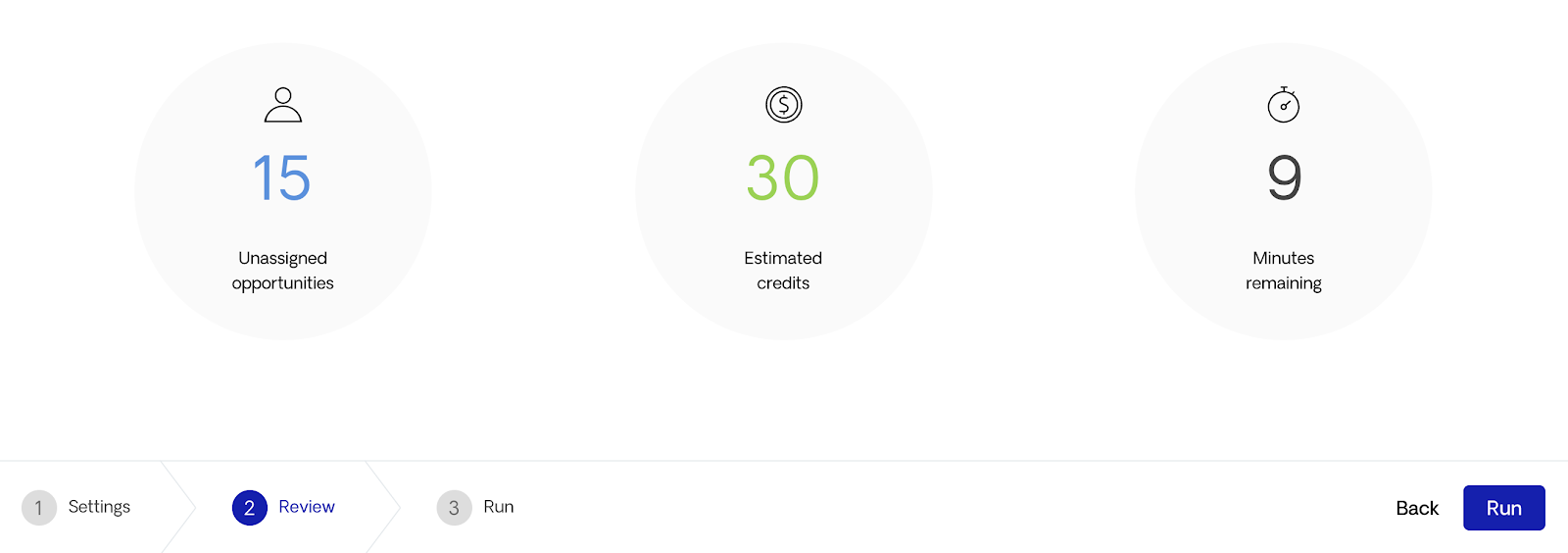

Respona’s basically telling you how many opportunities have been assigned, as well as how many credits are estimated to be used in finding the contact information for these opportunities.
Click “Run” and wait for a few minutes.
Respona will then find the best contact information for your startup PR campaign, based on the criteria you’ve set.
In our campaign, there were 15 opportunities in total, from which 12 were successfully assigned.
Click continue to move to the next step of the process.


In the next step, you can see the contact information and contact people that were assigned for each opportunity.
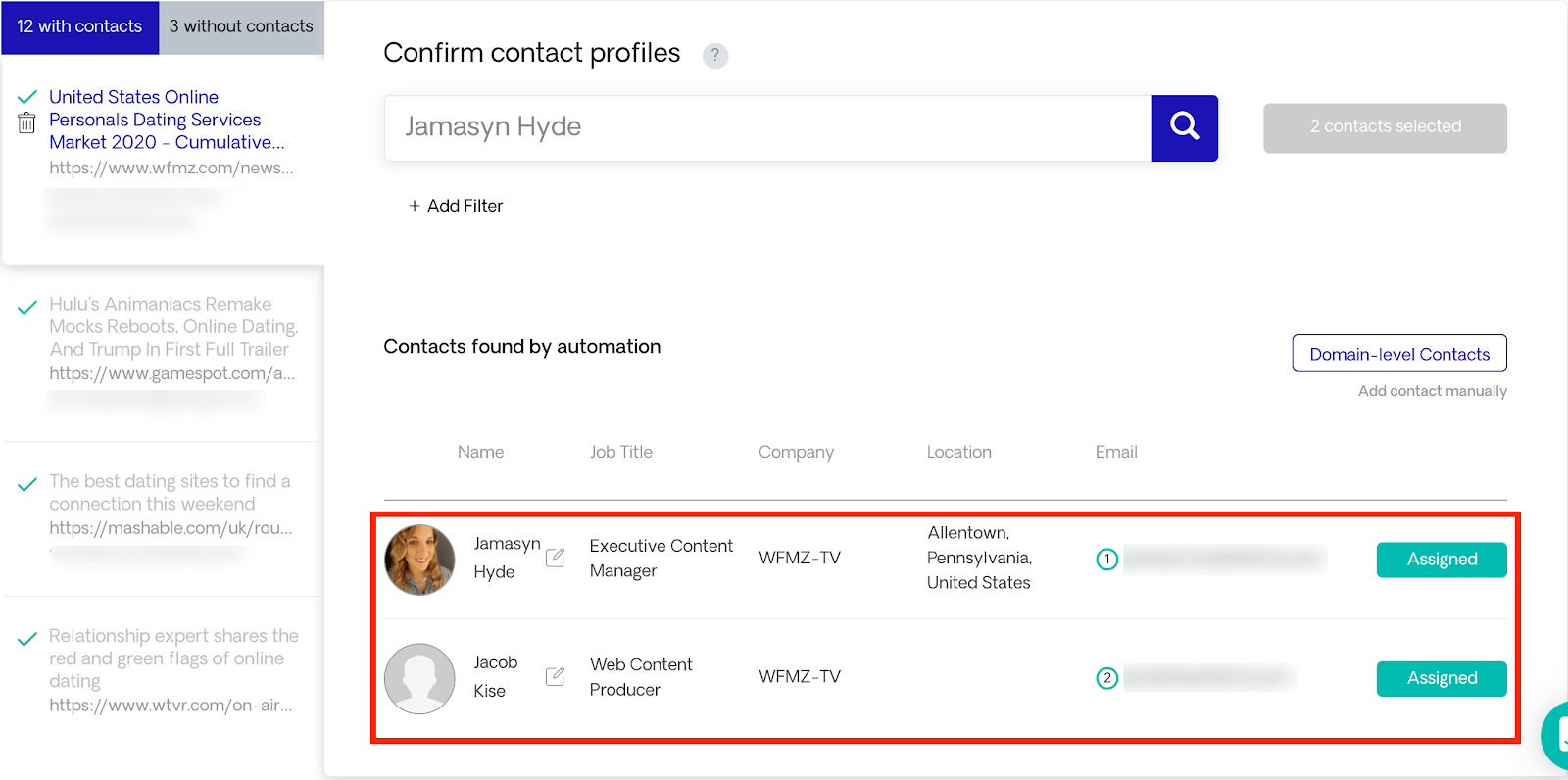

If everything seems as it should, you can click on “Next Step”.


From there, we have to personalize our emails before sending them to our prospects.
In this last step, the part of the email we’ll have to adjust is the highlighted one in the screenshot below.
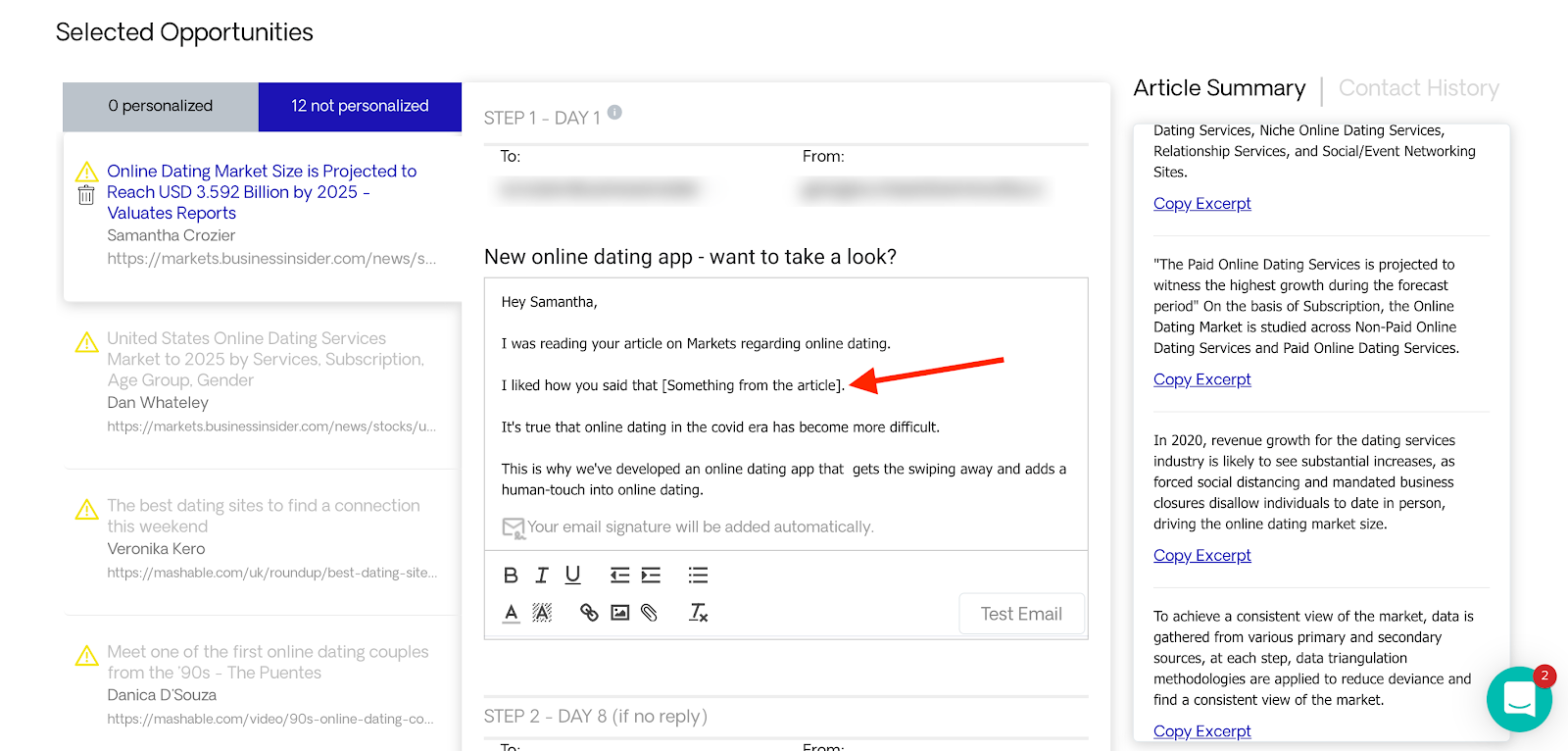

We’ll replace that with a relevant excerpt from the article we found so that we show to our prospect that we’ve actually read their article.
To do that, you can choose an excerpt from the little window on the right and click “Copy Excerpt”.
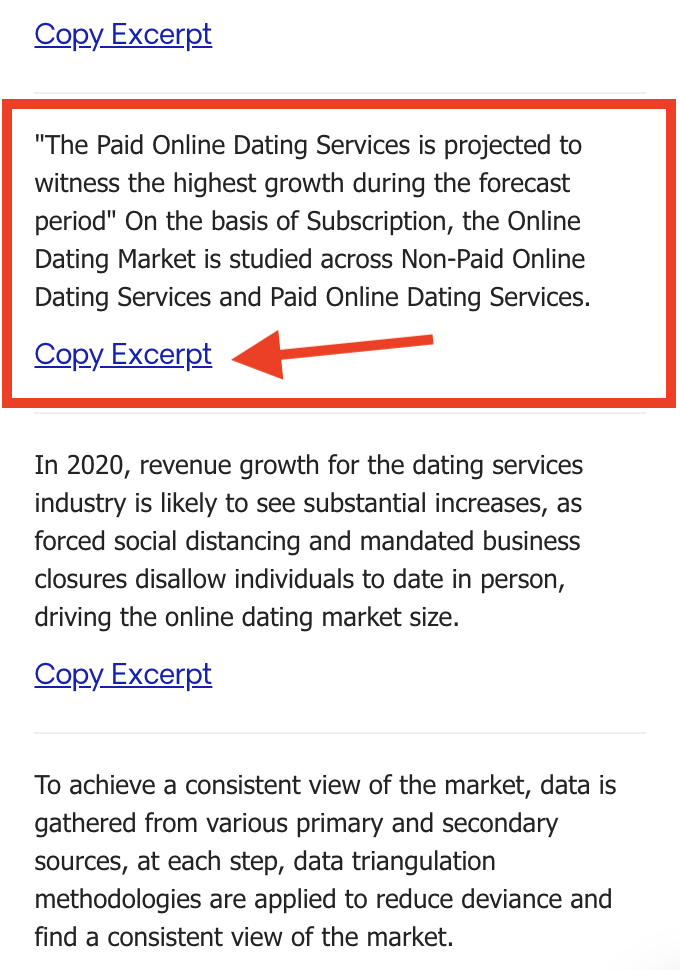

Paste that into the email and adjust it so that it makes sense.
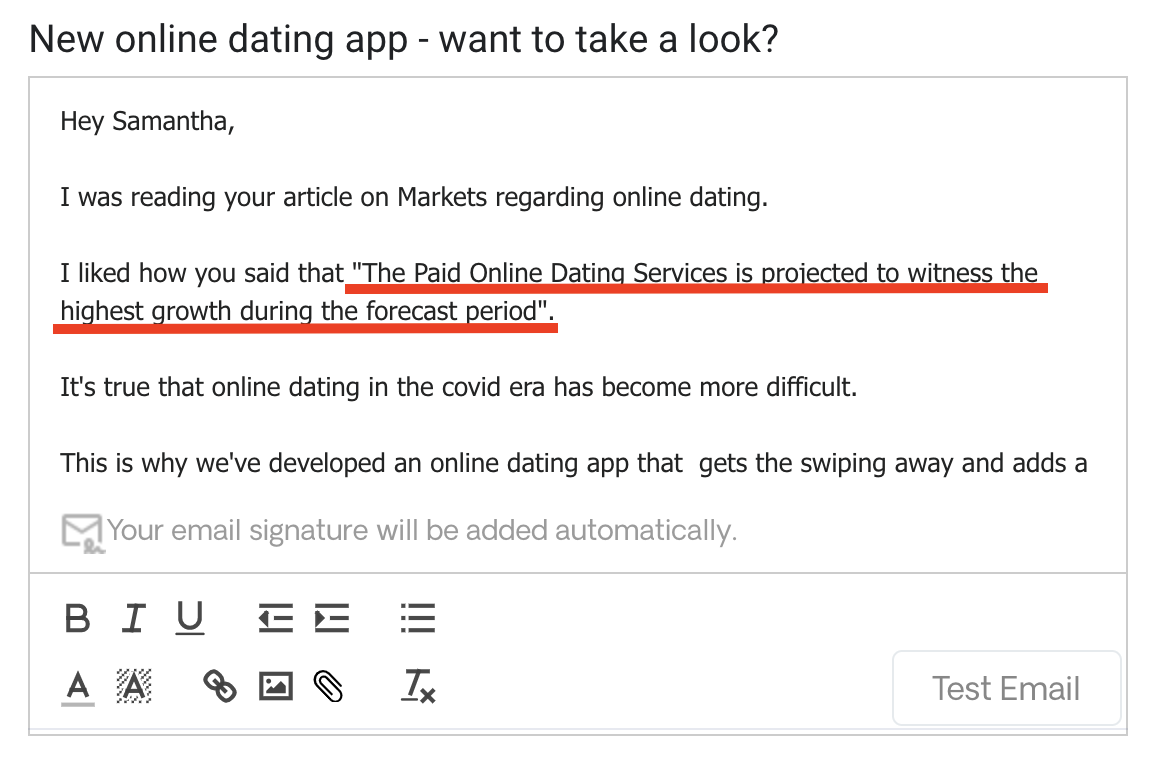

Whenever you personalize the email of one of the opportunities in your campaign, you’ll see that this email will be labeled as “personalized”.


Repeat this process for every opportunity in your list.
When you’re done, click “Launch Campaign” and you’re good to go.
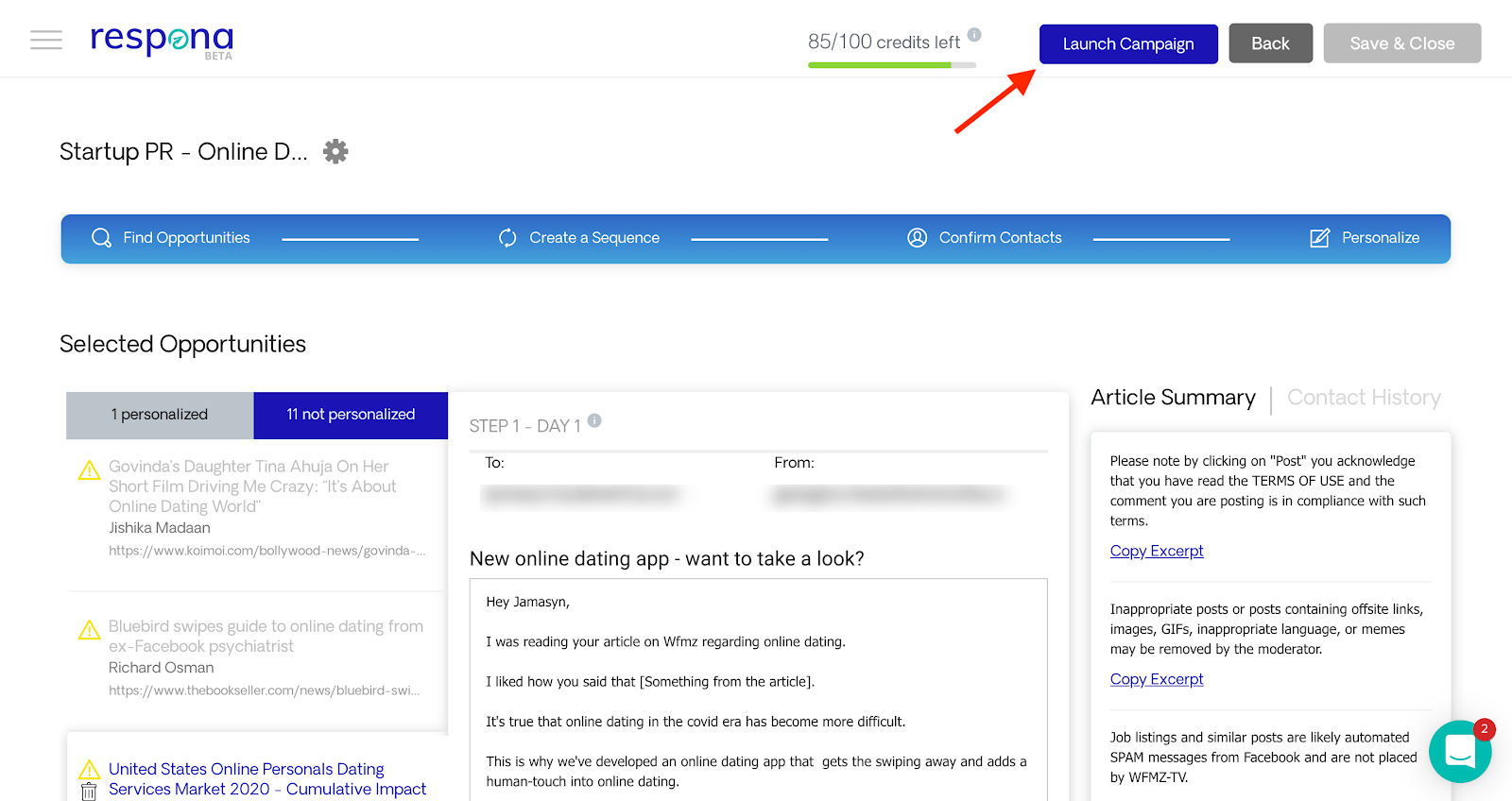

From there, you have to measure the results of your campaign and iterate based on results.
The work isn’t over once your startup’s PR campaign is launched.
Now, you need to measure the success of your campaign and marketing KPIs to see if your strategy is working or if it needs to be adjusted.
For the hypothetical campaign we’ve been using as an example, metrics that could be of interest are:
You can use tools like Respona to manage your conversations and see the stats of your startup PR campaign.
Respona will show you if outreach messages bounced, how many were delivered/opened, and the number of replies you received.
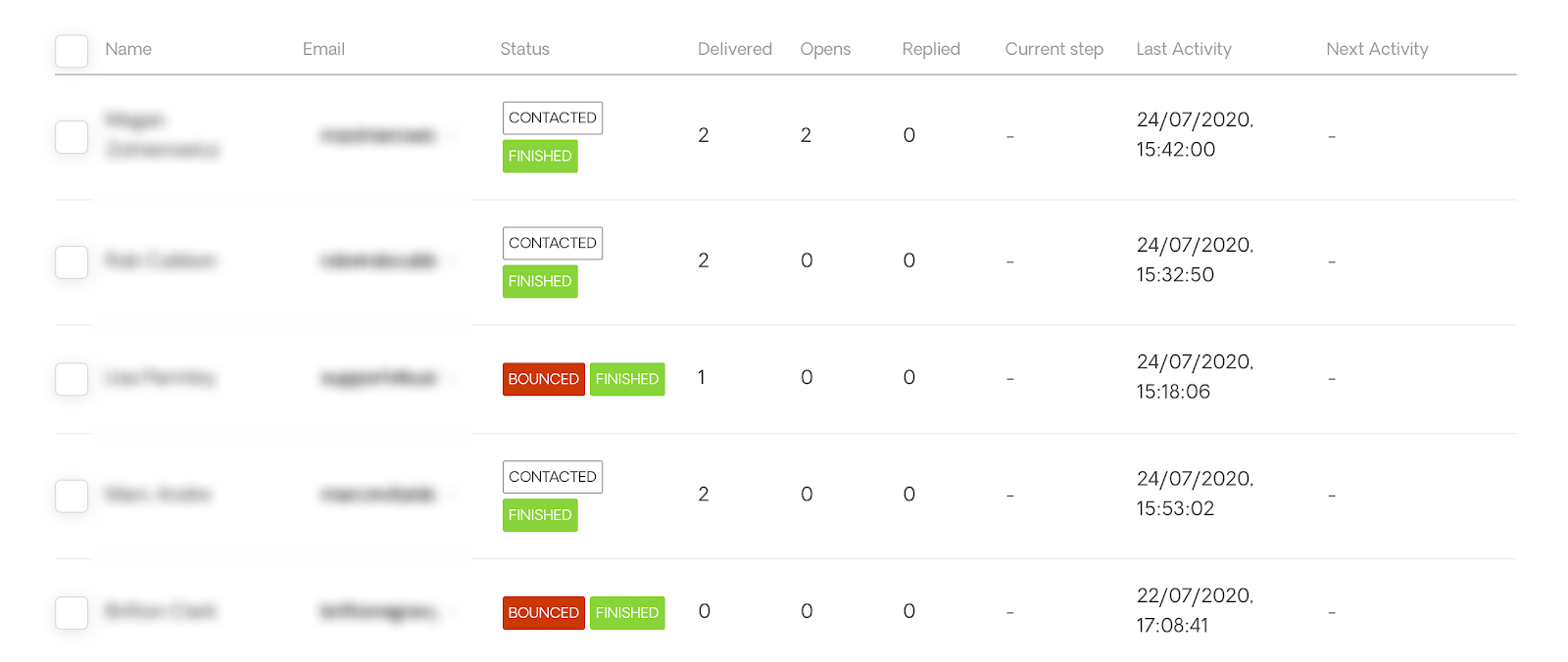

Having a tool that places all of this information in one place is extremely important for startups because you most likely won’t have the budget for multiple tools or the time to pull statistics from several sources.
As you can see below, Respona, presents outreach data in a simple and straightforward way that anyone can understand.
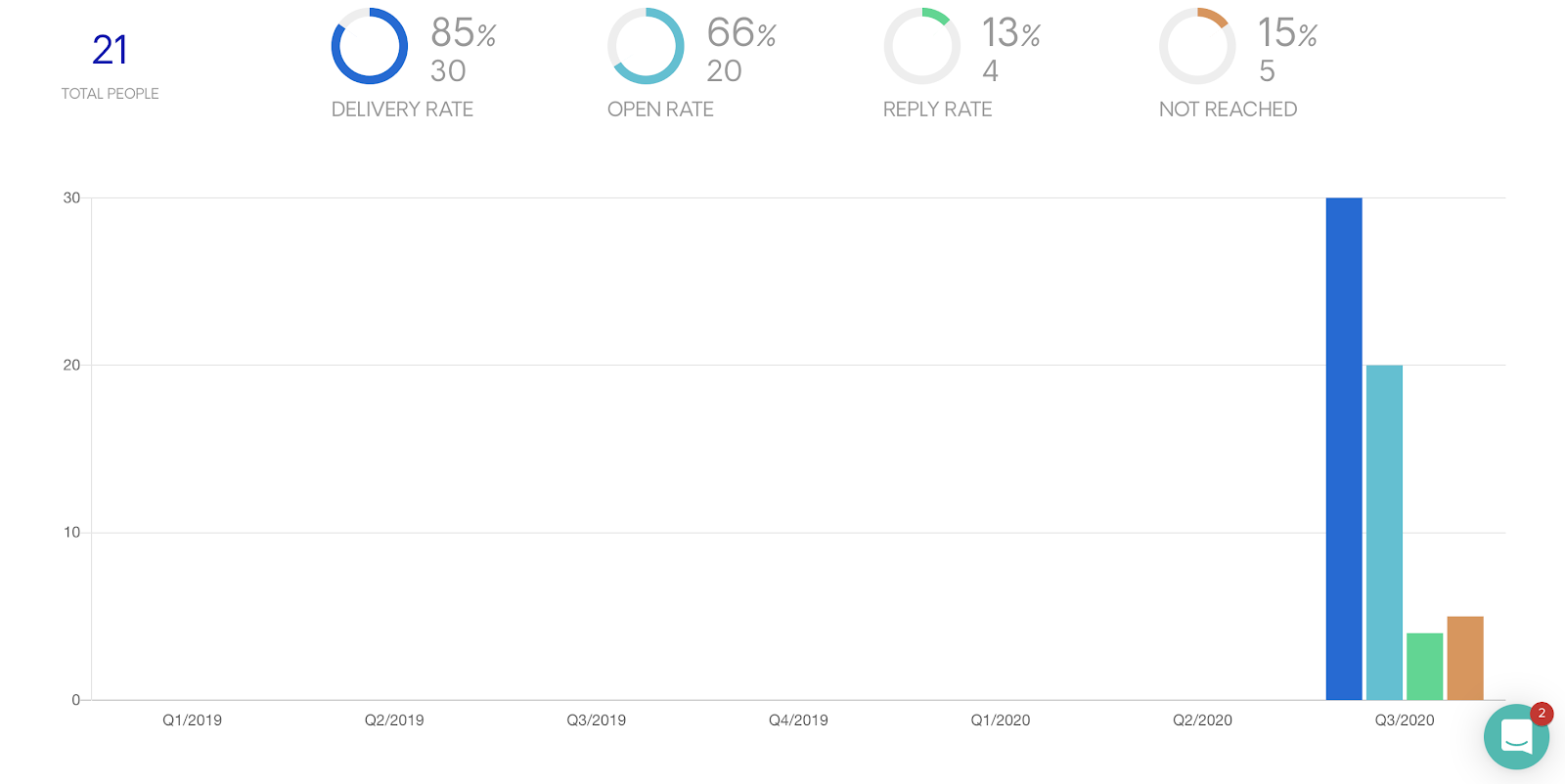

The metrics that you’ll monitor are different based on the goals of your startup PR campaign.
Also, the way you’re measuring success will differ based on the way you’re doing PR, e.g. hiring a PR firm vs doing it yourself.
For example, a PR campaign may have as a goal to get online mentions and backlinks back to your homepage.
Another one may have to get you featured on podcasts, virtual summits, shows, webinars, and anything in between.
You can find more information about measuring the success of your campaign in our recent article on how to write a PR plan.
This can be your playbook for making sure that you have everything you need to plan an effective PR campaign for your company.
Let’s wrap this up and close with some final thoughts.
So, there you have it.
Getting media coverage for your new product through effective PR strategies can be a great amplifier of your overall business efforts.
When running a startup, especially when you’re an early-stage startup, you need that extra push to help you raise brand awareness and start building relationships with industry experts, media outlets, journalists, and other businesses.
Successful PR campaigns can help you achieve all of these things.
You just have to try really hard, be creative, and be prepared to hear many “NO’s” along the way.
Now I’d like to hear from you:
What tactics have you tried so far for your startup? What worked and what didn’t?
Let me know by leaving a comment below!
If you are looking for additional information about startup PR or PR in general, we have compiled a list of frequently asked questions.
Hopefully, you have gathered some information about this through this guide but essentially, you get PR for your startup by building personal relationships and providing them with engaging content to reference or to solve a potential problem they are facing.
You can find more public relations resources on our blog.
There are a few reasons why startups need public relations but the most important reason is to introduce your business to the world. As a startup, not many people know about your business so pr helps you get the exposure you need without requiring a lot of money.
Startup PR also allows you to establish yourself as an expert in the industry while generating content for the ever-flowing media pipeline.
Recently we have started to see more articles claiming that PR is a dying industry but those titles can be misleading because the PR industry is changing more than it is dying.
The need for expensive PR firms may be dwindling but PR tactics are still very effective, especially for startups and small businesses.
Modern PR has evolved beyond a simple press release about a product launch to a more advanced approach of planned persuasion. Modern PR is more about the connections you are making and the exposure your brand can get by taking advantage of those connections.
Instead of focusing on relevant journalists and media coverage, it has evolved to influencers and bloggers and guest posts or podcasts. The fundamental goals are relatively the same as traditional PR but the approach has changed to match the types of media we use more today.
We’ve already listed a few PR examples throughout this guide but another great example is the ALS ‘Ice Bucket Challenge’. The viral challenge of pouring ice water over your head to symbolize the effects of ALS gave the little known charity global notoriety and raised millions in funds for the cause. It even got celebrities like Mark Zuckerberg and Bill Gates involved.
There’s no set length a PR pitch has to be but you want it to be as clear and concise as possible. Busy people will not take the time to read a long email so it’s a good rule to keep your pitch under 3 or 4 paragraphs.
Again, there is no standard for how much public relations efforts your startup should have. You will evaluate this based upon the PR resources available to your startup, the goals you are trying to achieve, and the effectiveness of your current PR strategy.
The amount of PR you will need also depends on the stage of your startup. Generally, you will need to invest more in this area at the beginning of your business journey and then you can scale back or adjust your strategy as time goes on.
We discussed this briefly at the beginning of this guide but there are pros and cons to both approaches. It’s cheaper to run your public relations in-house but you could have someone more experienced run your PR outreach by outsourcing.
You will have to weigh both options to decide which choice is better for your startup.
No spam, no BS, unsubscribe at any time.